Imagine having a marketing assistant that tirelessly handles repetitive tasks, nurtures leads, and optimizes your campaigns, all while you focus on strategic initiatives and building customer relationships. This is the power of marketing automation—a game-changing technology that revolutionizes how businesses engage with their audience. By seamlessly integrating software and cutting-edge technologies, marketing automation empowers organizations to streamline their marketing efforts, drive efficiency, and achieve remarkable results. In this era of digital dominance, understanding what marketing automation truly is and how it can transform your business is crucial. So, let’s delve into the world of marketing automation and unlock the potential to elevate your marketing endeavors to unprecedented heights.
What Is Marketing Automation?
Marketing automation refers to the utilization of software and technologies to automate and streamline various marketing tasks and processes. It involves leveraging technology to manage and execute repetitive marketing activities, such as lead nurturing, email marketing, social media scheduling, campaign management, customer segmentation, and more.
At its core, marketing automation aims to enhance marketing efficiency, effectiveness, and personalization by automating time-consuming and manual tasks. It allows businesses to reach their target audience with the right message at the right time, nurturing leads through the customer journey, and ultimately driving conversions and revenue.
One of the key aspects of marketing automation is its ability to centralize and integrate data from multiple channels and touchpoints, such as websites, social media platforms, email marketing software, customer relationship management (CRM) systems, and more. By collecting and analyzing this data, marketing automation platforms provide valuable insights into customer behavior, preferences, and engagement, enabling businesses to deliver highly targeted and personalized marketing campaigns.
Marketing automation offers a range of functionalities and features to support various aspects of marketing. These may include:
- Lead generation and capture: Automating the process of capturing and managing leads, such as through web forms, landing pages, and lead scoring techniques.
- Lead nurturing: Designing and implementing automated workflows to engage and nurture leads with relevant and personalized content at each stage of the buyer’s journey.
- Email marketing automation: Creating and sending automated email campaigns based on triggers, customer behavior, or specific actions to deliver timely and relevant messages.
- Customer segmentation: Dividing the customer base into distinct segments based on characteristics, behaviors, or preferences to deliver targeted marketing messages.
- Behavioral tracking and personalization: Tracking customer interactions and behavior across multiple channels to deliver personalized content, recommendations, and offers.
- Campaign management: Automating the planning, execution, and tracking of marketing campaigns across different channels and touchpoints.
- Reporting and analytics: Generating detailed reports and analytics to measure campaign performance, track ROI, and gain insights for continuous improvement.
By implementing marketing automation, businesses can benefit in several ways. It allows them to save time and resources by automating repetitive tasks, increase marketing efficiency and effectiveness, improve lead nurturing and conversion rates, enhance customer experiences through personalization, gain valuable insights into customer behavior, and drive overall marketing ROI.
Marketing automation empowers businesses to optimize their marketing efforts, build stronger customer relationships, and achieve better results by leveraging technology to automate and streamline various marketing tasks and processes. It revolutionizes the way organizations engage with their audience, making marketing more targeted, personalized, and efficient in the digital age.
Marketing Automation Tools
When it comes to marketing automation software, there are several options available in the market, each with its unique features, capabilities, and pricing models. Here is a comparison of different marketing automation software to help you evaluate and select the one that best suits your business needs:
HubSpot:
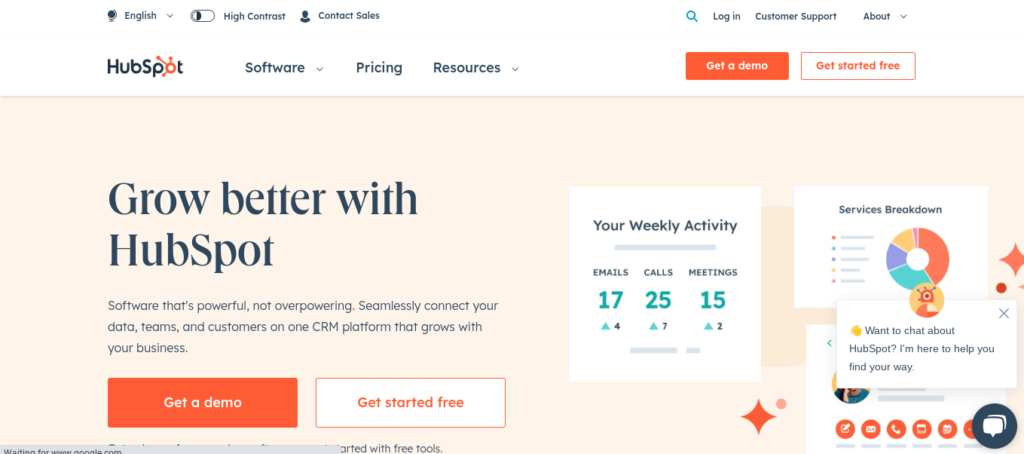
- HubSpot offers a comprehensive marketing automation platform with features like lead generation, email marketing, social media management, CRM integration, and analytics.
- It provides an intuitive user interface and is suitable for businesses of all sizes.
- HubSpot offers both free and paid plans, with pricing based on the number of contacts and additional features required.
Marketo:
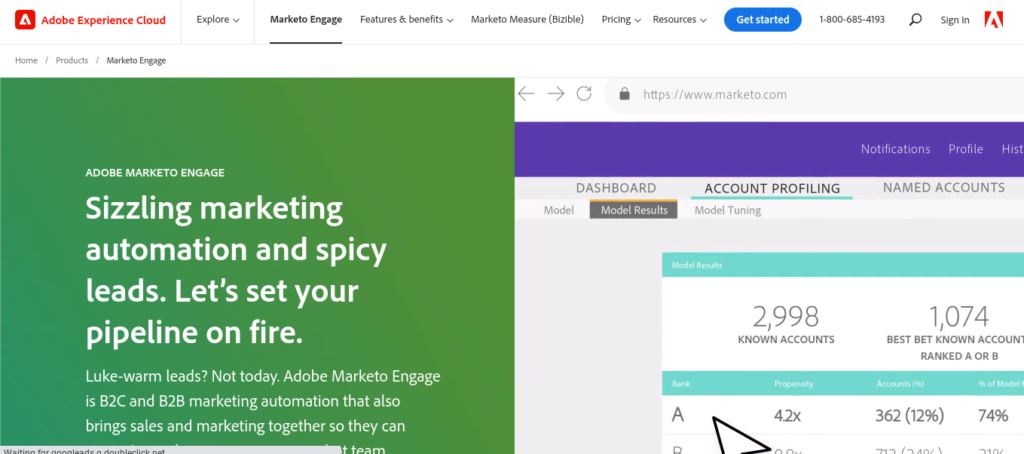
- Marketo is a robust marketing automation solution with advanced features for lead management, email marketing, campaign management, and analytics.
- It offers powerful lead scoring and nurturing capabilities, as well as integration with CRM systems.
- Marketo is typically suitable for medium to large enterprises and offers customizable pricing based on specific business requirements.
Pardot:

- Pardot, a part of Salesforce, is a popular marketing automation tool focused on B2B marketing.
- It offers features such as lead generation, email marketing, lead nurturing, and ROI reporting.
- Pardot provides seamless integration with Salesforce CRM, making it ideal for businesses already using Salesforce.
- Pricing is based on the number of users and features required.
ActiveCampaign:
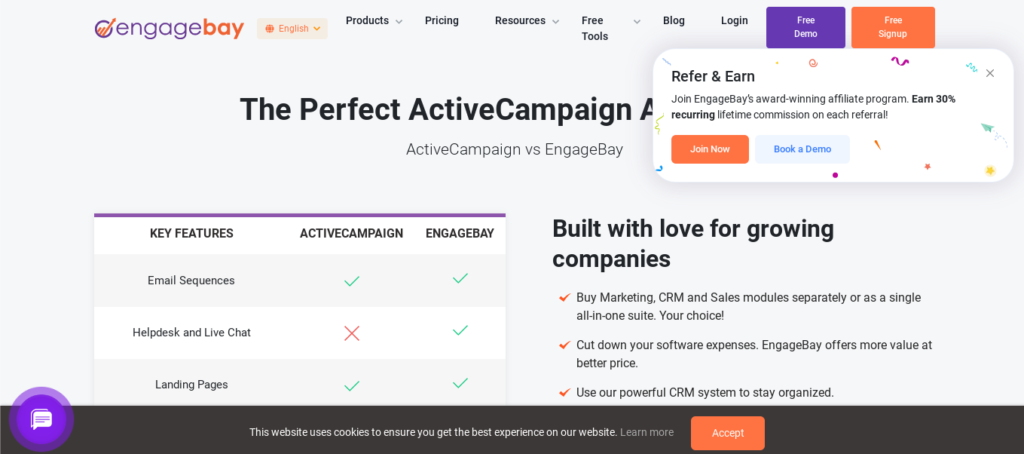
- ActiveCampaign is known for its powerful automation capabilities, including email marketing, lead scoring, behavior tracking, and CRM integration.
- It offers advanced segmentation and personalization features, along with a user-friendly interface.
- ActiveCampaign is suitable for small to mid-sized businesses and offers different pricing tiers based on the number of contacts and additional features.
Mailchimp:
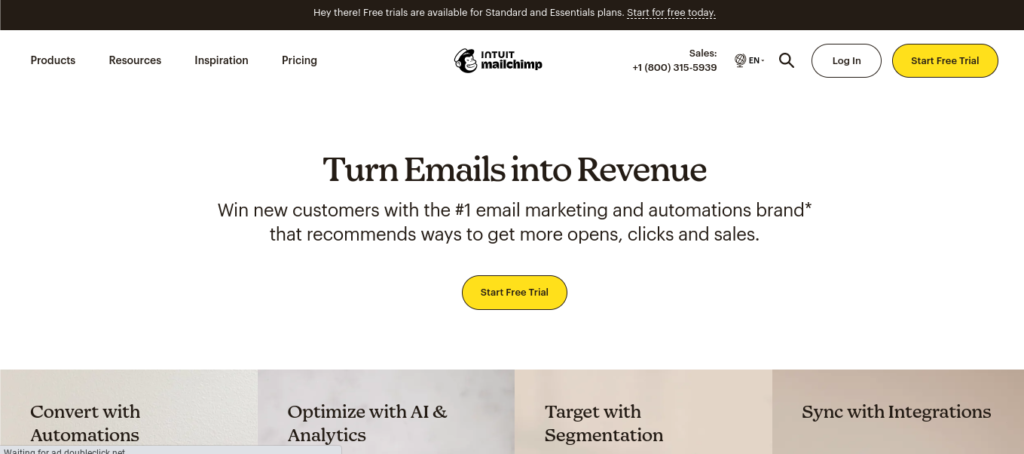
- Mailchimp is a widely used marketing automation platform that offers email marketing, landing page creation, social media management, and basic automation features.
- It provides an easy-to-use interface, making it suitable for small businesses and beginners.
- Mailchimp offers a free plan for a limited number of contacts, with paid plans available for more advanced features and larger contact lists.
GetResponse:
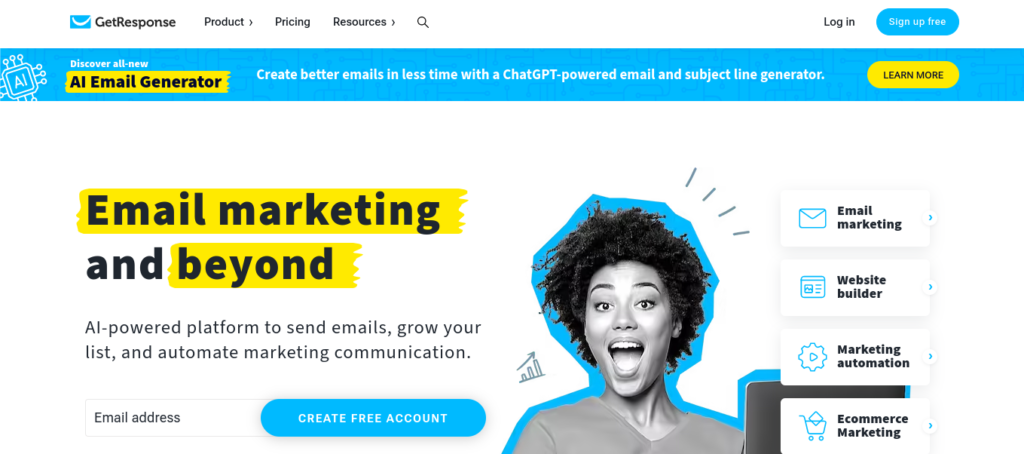
- GetResponse offers a comprehensive marketing automation platform with features such as email marketing, landing page creation, webinars, and automation workflows.
- It provides a user-friendly interface and is suitable for businesses of all sizes.
- GetResponse offers flexible pricing based on the number of contacts and additional features required.
When comparing marketing automation software, consider factors such as the specific features and functionalities required for your business, scalability, ease of use, integration capabilities with existing systems, pricing, customer support, and user reviews. It’s also helpful to take advantage of free trials or demos to test the software before making a decision.
Lead Management and Nurturing
Lead management and nurturing are critical components of marketing automation that focus on capturing, organizing, and nurturing leads throughout their journey, from initial contact to becoming a potential customer. This process involves systematically engaging with leads, providing relevant information and content, and guiding them towards making a purchase decision.
Here’s a breakdown of lead management and nurturing within marketing automation:
1- Lead Generation: Lead generation involves attracting and capturing potential customers’ information, typically through various channels like websites, landing pages, forms, social media, or events. Marketing automation helps streamline this process by automatically collecting lead data and integrating it into a centralized database.
2- Lead Scoring: Lead scoring assigns a value to each lead based on their behavior, demographic information, and engagement level. Marketing automation platforms enable businesses to set up lead scoring criteria and automate the scoring process. This helps prioritize leads and identify those with the highest potential for conversion.
3- Lead Segmentation: Leads can be categorized into different segments based on common characteristics or behaviors. Marketing automation allows businesses to segment leads based on demographics, interests, purchase history, or engagement levels. This segmentation helps deliver targeted and personalized messages to specific groups, improving the relevance and effectiveness of communication.
4- Lead Nurturing Workflows: Marketing automation platforms enable the creation of automated workflows or drip campaigns, which are a series of pre-defined messages or actions triggered based on specific criteria. These workflows nurture leads by providing them with relevant content, educational materials, and offers over time. The aim is to build trust, maintain engagement, and guide leads towards a purchase decision.
5- Personalization and Dynamic Content: Marketing automation allows for personalization by tailoring messages and content based on the lead’s behavior, preferences, or demographic information. Dynamic content capabilities enable the automation platform to display different content variations to individual leads based on their interests or stage in the buyer’s journey. This level of personalization enhances engagement and improves the chances of conversion.
6- Lead Tracking and Analytics: Marketing automation systems track lead interactions and engagement across multiple touchpoints, such as website visits, email opens, link clicks, and form submissions. These tracking capabilities provide valuable insights into lead behavior, allowing marketers to evaluate the effectiveness of their campaigns and make data-driven decisions to optimize lead nurturing strategies.
7- Lead Handoff to Sales: As leads progress through the nurturing process, marketing automation platforms can facilitate seamless handoffs to the sales team. Once a lead reaches a predefined qualification criteria, the marketing automation system can automatically notify the sales team, assign the lead, and provide relevant information to ensure a smooth transition from marketing to sales.
Marketing Automation Strategies and Best Practices
Implementing marketing automation requires thoughtful strategies and adherence to best practices to maximize its effectiveness and achieve desired outcomes. Here are some key marketing automation strategies and best practices:
1- Clearly Define Goals and Objectives: Before implementing marketing automation, define your specific goals and objectives. Whether it’s lead generation, customer retention, or improving conversion rates, having clear goals will guide your automation efforts and help measure success.
2- Understand Your Target Audience: Effective marketing automation relies on understanding your target audience’s needs, preferences, and behaviors. Conduct thorough audience research and develop detailed buyer personas to tailor your automation campaigns accordingly.
3- Segment Your Audience: Segmenting your audience into smaller, targeted groups allows for more personalized and relevant messaging. Utilize demographic, behavioral, and psychographic data to create segments and deliver tailored content and offers to each group.
4- Nurture Leads with Relevant Content: Lead nurturing is a crucial aspect of marketing automation. Design automated workflows that deliver relevant and timely content based on where leads are in the buyer’s journey. Nurture leads with educational materials, case studies, testimonials, and personalized offers.
5- Integrate Marketing Automation with CRM: Integration between marketing automation and customer relationship management (CRM) systems is essential for a seamless customer experience. Sync data between platforms to ensure accurate lead tracking, personalized communication, and enhanced customer insights.
6- Leverage Behavioral Tracking and Personalization: Utilize the data collected through marketing automation to track customer behavior and personalize marketing messages. Implement dynamic content and personalized recommendations to deliver targeted experiences that resonate with individual customers.
7- Implement Progressive Profiling: Progressive profiling is the gradual collection of customer information over time. Instead of overwhelming leads with long forms, use marketing automation to gather additional data gradually. This approach helps build trust and improves lead conversion rates.
8- Test and Optimize: Continuously test and optimize your marketing automation campaigns. A/B test different elements, such as subject lines, email content, call-to-action buttons, and landing pages, to identify what resonates best with your audience. Use data-driven insights to refine your automation strategies.
9- Maintain Clean and Relevant Data: Ensure that your customer data is accurate, up-to-date, and segmented properly. Regularly clean your database to remove duplicates, inactive contacts, and invalid information. This ensures that your marketing automation efforts are based on reliable and relevant data.
10- Measure and Analyze Performance: Track and analyze key metrics and KPIs to evaluate the performance of your marketing automation campaigns. Monitor conversion rates, open rates, click-through rates, and engagement metrics to gain insights into the effectiveness of your automation strategies.
11- Provide Ongoing Training and Support: Marketing automation platforms can be complex, so provide training and support to your marketing team. Ensure they have a solid understanding of the tools, features, and best practices to maximize the benefits of automation.
12- Stay Up-to-Date with Industry Trends: The field of marketing automation is continuously evolving. Stay informed about the latest trends, advancements, and best practices in the industry. Attend webinars, conferences, and training sessions to stay ahead of the curve and leverage new opportunities.
FAQS
1- What is the meaning of marketing automation?
Marketing automation is technology that manages marketing processes and multifunctional campaigns, across multiple channels, automatically. With marketing automation, businesses can target customers with automated messages across email, web, social, and text.
2- What is an example of marketing automation?
Sending out surveys to gain feedback on products, services, and updates is another excellent marketing automation example. These are typically sent out after triggers, such as purchases, or program, site, or product updates.
3- What is CRM marketing automation?
Marketing automation is the use of technology or software to automate the various marketing activities of a business. Marketing automation tools allow modern businesses to streamline, automate, and measure the ROI of their efforts, leading to a more efficient marketing team and increased revenue.
4- What is marketing automation and why is it important?
Marketing automation is a way of using technology to manage marketing processes and campaigns automatically across multiple channels and to automate repetitive tasks. This lets businesses operate more efficiently and target customers with automated messages across email, SMS, social media and the internet.
5- Why is marketing automation the future?
The good news is that marketing automation software will automatically track all the leads you receive and, based on your settings, can even break them down by industry and company (for B2B businesses). You can then determine which marketing messages to send to each lead, increasing efficiency.
6- What are the roles in marketing automation?
Depending on the marketing automation software, the marketing automation personnel looks after the ideation, execution, and measurement of different aspects of marketing. An essential part of the responsibilities includes email marketingOpens a new window , lead generation and nurturing, lead scoring, and analytics.
7- What are market automation tools?
Marketing automation is software that handles routine marketing tasks without the need for human action. Common marketing automation workflows include email marketing, behavioral targeting, lead prioritization, and personalized advertising.
Conclusion
Marketing automation refers to the use of technology and software to automate repetitive marketing tasks and processes, allowing businesses to streamline their marketing efforts and improve efficiency. It involves the implementation of software platforms that enable businesses to automate various marketing activities, such as email marketing, lead generation, customer segmentation, social media management, and campaign tracking.
Marketing automation offers several benefits to businesses. Firstly, it saves time and resources by automating manual tasks, reducing human error, and allowing marketers to focus on more strategic initiatives. Secondly, it enhances customer engagement and personalization by delivering targeted and relevant content to the right audience at the right time. By segmenting and analyzing customer data, businesses can create personalized experiences and nurture leads throughout the buyer’s journey. Thirdly, marketing automation improves lead generation and conversion rates by automating lead nurturing processes, tracking prospect behavior, and triggering timely and personalized communications.
Moreover, marketing automation provides valuable insights and analytics that enable businesses to measure and optimize their marketing efforts. By tracking key performance indicators (KPIs) and campaign metrics, marketers can gain valuable insights into the effectiveness of their strategies and make data-driven decisions. Additionally, marketing automation integrates with other business systems such as customer relationship management (CRM) software, enabling seamless data flow and a unified view of customer interactions.





 Get Sala Now
Get Sala Now